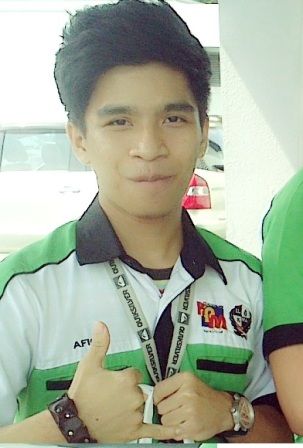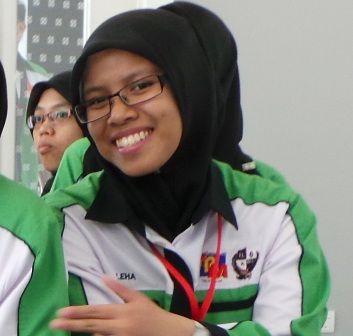Saturday, 31 August 2013
The International Air Transport Association (IATA)
03:56
3 comments
In logistics and
transportation industry, we have five modes of transportation, which is, rail,
road, air, pipeline and sea. As we know, air cargo is a premium transport
service used when speed is paramount and cost is a secondary consideration. The
advantages of air cargo movement are highest movement speed, warehousing cost
are reduced and insurance premium in air transportation is lower.
In air cargo industry,
the rate is stated by the International Air Transport Association (IATA). The International
Air Transport Association is a non-government trade association for the world’s
airlines which representing some 240 airlines or 84 % of total air traffic.
IATA’s stated mission is to “represent, lead and serve the airline industry”. All
the Airlines rules and regulation are defined by IATA.
The
main objective of this organization is to assist airline companies to achieve
lawful competition and uniformity in prices. IATA acts as a price setting body
through bilateral government agreement. IATA fare calculation divided into 3
regions:
1. South,
Central and North America
2. Europe,
Middle East and Africa
3. Asia,
Australia, New Zealand and Pacific Ocean’s Islands
IATA involved in a
charity and humanitarian. They manages $20 billion in industry settlements
annually in the Japan market, minimize the impact of taxation impose by
government, have the policy on aircraft noise and other emissions, and advice
the industry on new aircraft and system for hijacking and sabotaging. It also
regulates and publishes Dangerous Goods Regulation Manual for global
standardization, coordinate scheduling process of slot at congested airports
and imposed IATA Safety Operational Audit (ISAO) as a mandatory requisite for
all the members.
Dangerous goods often called hazardous materials may be pure chemicals, mixture of substances, manufactured products or articles which can pose a risk to people, animals or the environment if not properly handled in use or transport. It can be in form of liquid, solid and gas.
One of the objectives
of the IATA is to help decision makers be informed and understand more about
the industry by increasing awareness of the contribution of aviation to the
economies of different countries in the world. IATA takes up the causes of
airlines across the world, fighting their case when charge or taxes are
unreasonably high and tries to advocate pro airline regulations. They also aims
to help airlines simplify their systems and processes and serve passenger
better, while at the same time reducing costs and increasing their efficiency.
They
works with its member airlines to ensure the easy travel and transfer of goods
and services across different airlines and across the world to make sure they
move with ease traveling within a country in the same airlines. It also helps
airlines to train staff, offer consultation and has publications that provide
similar support.
Friday, 23 August 2013
Brussels Airport Diamond Heist
09:00
1 comment
conclusion
Improve Security
Improve Security
Network IP – an essential tool for system flexibility
The use of IP (Internet Protocol) connectivity provides flexibility in optimizing security camera placement, with wireless transmission methods such as 3G mobile phone signals meaning that physical connections such as fiber optic cabling are not required, with their associated cost and installation disruption. The relative ease of IP-enabled cameras' installation can serve a dual purpose, helping keep an eye on staff working in remote areas of the airfield for both security and health and safety purposes. Managers can also dial-in to a camera network remotely, to view images without needing to visit the control room.
The use of IP (Internet Protocol) connectivity provides flexibility in optimizing security camera placement, with wireless transmission methods such as 3G mobile phone signals meaning that physical connections such as fiber optic cabling are not required, with their associated cost and installation disruption. The relative ease of IP-enabled cameras' installation can serve a dual purpose, helping keep an eye on staff working in remote areas of the airfield for both security and health and safety purposes. Managers can also dial-in to a camera network remotely, to view images without needing to visit the control room.
Use of video analytics software in airport security solution
Video analytics provides an advanced surveillance-related filter that helps to sort through multiple scenarios that security teams are routinely faced with. This type of analysis is also benefiting from ongoing investment by systems suppliers who are addressing the need for cost effective, meaningful, reliable and user-friendly software.
In practical terms, video analytics involves software processing algorithms that analyses security camera data from a scene, detect situations that meet a certain set of conditions, filter them for possible false alarms and then, if verified, issue an alert that security staff can react to appropriately. Use of such advanced video analytics software is a step up from traditional video motion detection and offers significant future potential in combating crime threats.
At an airport perimeter, the technology could, for example, use what's called a ‘virtual tripwire' - essentially an area of the scene that triggers an alarm when an object enters that zone. Closer to the center of passenger operations, video analytics technology can also flag up the presence of left baggage in a terminal or other sensitive area.
Security team training
A holistic security systems environment will involve different types of protective equipment communicating collectively to contribute more than the sum of their parts. For instance, CCTV cameras on automatic area ‘tours' will immediately react to the opening of a vehicle barrier by instantly refocusing on this area and triggering the digital recording of the event for subsequent identity validation or prosecution purposes.
Monday, 19 August 2013
CILT in Malaysia

CILT
stands for The Chartered Institute of Logistics and Transport. CILT is the
international professional body for all sectors of logistics and transport
industry. Founded in the United Kingdom in 1919 and granted a Royal Charter in 1926,
it was established to promote knowledge of the science and art of logistics and
transport and to provide a source of authoritative views for communication to
government, industry and the community.
The
Institute is a progressive and purposeful organization which provides a forum
for professionals and academicians engaged in transport and logistics industry.
The Institute’s Qualifying Examinations are internationally recognized
professional transport and logistics qualification of a high educational standard.
A member with a pass in the CILT Qualifying Examination is accepted as
equivalent to a general degree.
Together
with appropriate work experiences, they lead to full Membership and the
designatory letters of “CMILT” which recognized by the Public Services
Department in Malaysia as equivalent to an honors degree of a local
university.
The
Chartered Institute of Logistics and Transport in Malaysia (CILTM) had its
beginnings in 1965 with the formation of Malaysia Section. This was to fulfill
the need for the qualified of logistics and transport after independence and
the increasing demand in the transport industries. In October 1990, the
Malaysia Section was upgrade to that of a National Council.
Internationally,
the institute has about 33 000 members with about half the number residing
outside the UK, mostly in the Commonwealth countries. Malaysia has about 2 000
members of all grades. Membership of the CILT not only offers today’s
transportation a breadth and depth of training through its excellent
examination system, it also offers the opportunity to exchange valuable ideas
and experiences with other logistics and transport professionals.
In
Malaysia, the CILT office is at Shah Alam, Selangor Darul Ehsan. The address is,
The Chartered Institute of Logistics and Transport in Malaysia, 12D, 4th
Floor, Block 1, Worldwide Business Centre, Jalan Tinju 13/50, Section 13, 40675
Shah Alam, Selangor.
On 29th September 2004, MITRANS was officially appointed as
the Examining Body for all approved Professional Qualifying Examinations (PQE
Logistics and PQE Transport), the Chartered Institute of Logistics and
Transport (CILT) in Malaysia, and for students in the Asia Pacific and African
Regions who are undertaking study courses provided by CILT in Malaysia leading
to the professional membership of CILT. MITRANS is Malaysia’s advisory
transportation institute and in responsible for transportation research,
consultancy and training.
Monday, 5 August 2013
Innovation of railways transportation in Malaysia
02:18
Antonov An-225, CILT in Malaysia, Innovation of Railways Transportation in Malaysia, The Boeing 747 Dream-lifter
No comments
In peninsular Malaysia railway
transportation industry, we have Keretapi Tanah Melayu Berhad (KTMB), KTM
Komuter, KL Monorail, Express Rail Link (ERL), Light Rail Transit(LRT), Star and Putra. This
modes of transportation move both, passenger and freight. KTMB is the only rail
that offers the long term journey service from Perlis (north) to Johor or
Singapore (south) and Kelantan (east) Malaysia. KTMB is important in freight
service because the rail network connect with seaport such as Penang Port,
Kelang Port, Tanjung Pelepas Port and Tanjung Pagar. While other rail
transportation such as KTM Komuter, KL Monorail, ERL, Star and Putra only
provided short term journey and exist in busy city such as Kuala Lumpur.
To compare railways and
motor carrier mode of transportation, the demand for motor carrier is high that
railways. This happened because of the number of rail or the schedule of rail
transport is not flexible. Which mean the journey not including all the region
or area of the country. This does’ not mean to increase the number of terminal
but more to increase the number of gondola and railways from new area connect with
the terminal. So, the passenger will have more choice to use either rail or
motor carrier.
According to Statistics
Department of Malaysia, every years especially in seasonal period, the accident
in road increase. The accident will affect to the damage of road, loss of
living and property and traffic jam to other road passenger especially for
freight service. They need to deliver the product to their customer on time, when
something like this happened, they need other alternative to deliver the product to
the customer if not, their customer services will be poor and affect the
company names and reputation.
Based on five mode of transportation,
road, air, sea, rail and pipeline. Sea in the most mode of transportation used in logistics industry while rail is the
less mode of transportation used in logistics industry. Normally, rail only
brings the low value and in bulk quantity of product such as sand and coal.
But, in Malaysia the rail transportation can be used for freight service for
domestics or in Malaysia area such as for letter or online product in Malaysia.
Since the possibility of accident in railways is less than roadways, the
products can arrived on time.
In order to reduce the
accident and traffic jam in roadway. The government should build more railways
and increase the number of gondola and the speed of railways. So, people have many
choices and can attract them to use railways services. In certain rail terminal in Malaysia, there was the double tracking of rail. This project gives the advantage to the people and the community in that terminal area to used the rail services frequently. Besides that, the rail service should be more speed compare to motor carrier since they have their on track. The rail company can use the resources such as green technology as the energy to move the rail. So they can keep the environment in good condition.
Ps : Please give the comment and correct us if there is the wrong information in our post.TQ.
Subscribe to:
Comments (Atom)





























